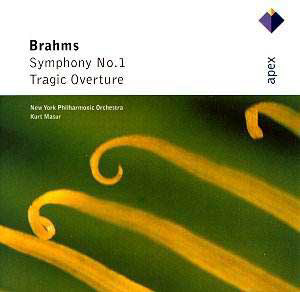When the New York Philharmonic Orchestra decided during the
1990s that they needed to 'go back to basics', they appointed Kurt Masur
as principal conductor in order to focus more centrally on the mainstream
repertoire. And repertoire does not come much more mainstream than Brahms.
Therefore this reissue is particularly interesting,
and it has many strengths. The main one is that the interpretation and
the playing carry real weight and conviction. The recorded sound aids
and abets this commitment, which makes the project very compelling and
worthwhile, for there is clarity in the individual lines, and resonance
in the fully scored climactic passages.
All this is apparent right from the beginning, which
is appropriately massive and powerful. From there the first movement
reaches its Allegro and a stubborn forward propulsion, with interludes
of some atmosphere, including the woodland evocation of horn calls.
The slow movement likewise has keenly judged tempi from a master of
his art, and the solo role of the violin is beautifully balanced.
While the third movement intermezzo can sound more
sophisticated, more fleet footed than this, Masur's judgement is still
sure, and this is further confirmed with the atmospheric slow introduction
to the finale. Here the original Teldec recording comes off particularly
well in this new identity (we are not told if there has been any remastering).
The great finale theme carries all before it of course, and while the
ebb and flow of tension and relaxation has sometimes been even more
imaginatively handled than here (try various Karajan performances, for
example), when one hears Masur one remains convinced of the music's
sure direction.
The Tragic Overture does not quite come off with the
same effectiveness, though it is good enough. This feels more of a safe
studio performance than a real occasion with everyone on the edge of
their seats. The playing is first class, as we would expect of the New
York orchestra, but neither the conductor nor the orchestra give the
impression that this is a matter of life and death.
As a whole this is a worthwhile issue which offers
very good value at bargain price.
Terry Barfoot


![]() See
what else is on offer
See
what else is on offer 